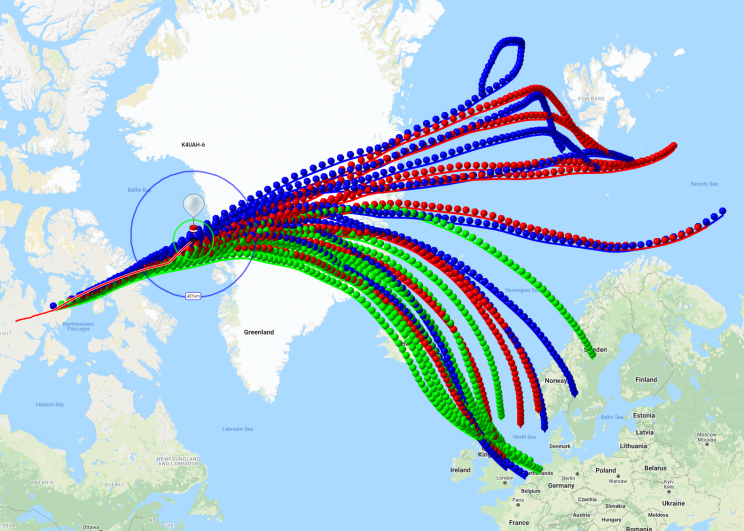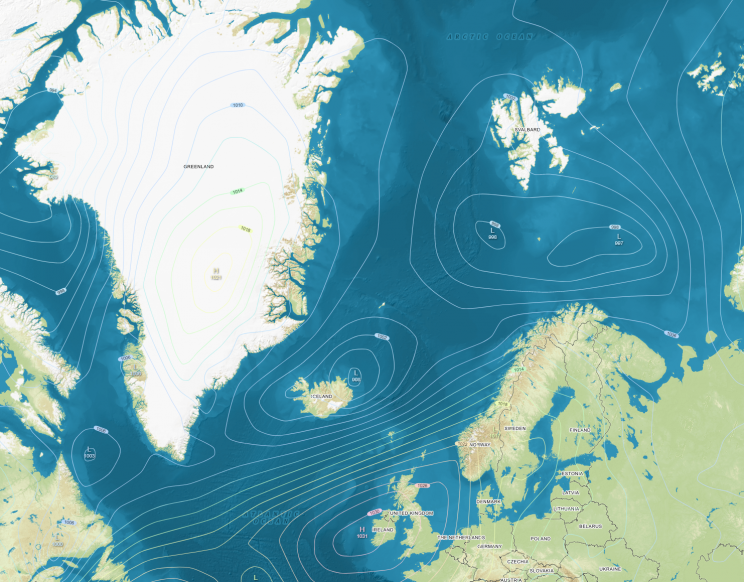Which Way Does the Wind Blow?
July 21, 2021
With all due respect to Bob Dylan, atmospheric transport forecasting can be difficult. When ARL intern Todd McKinney sat down to analyze his University’s super high pressure balloon satellite, K4UAH-6, as it was about to make a pass over Greenland, the high pressure cells gave a wide range of results.



